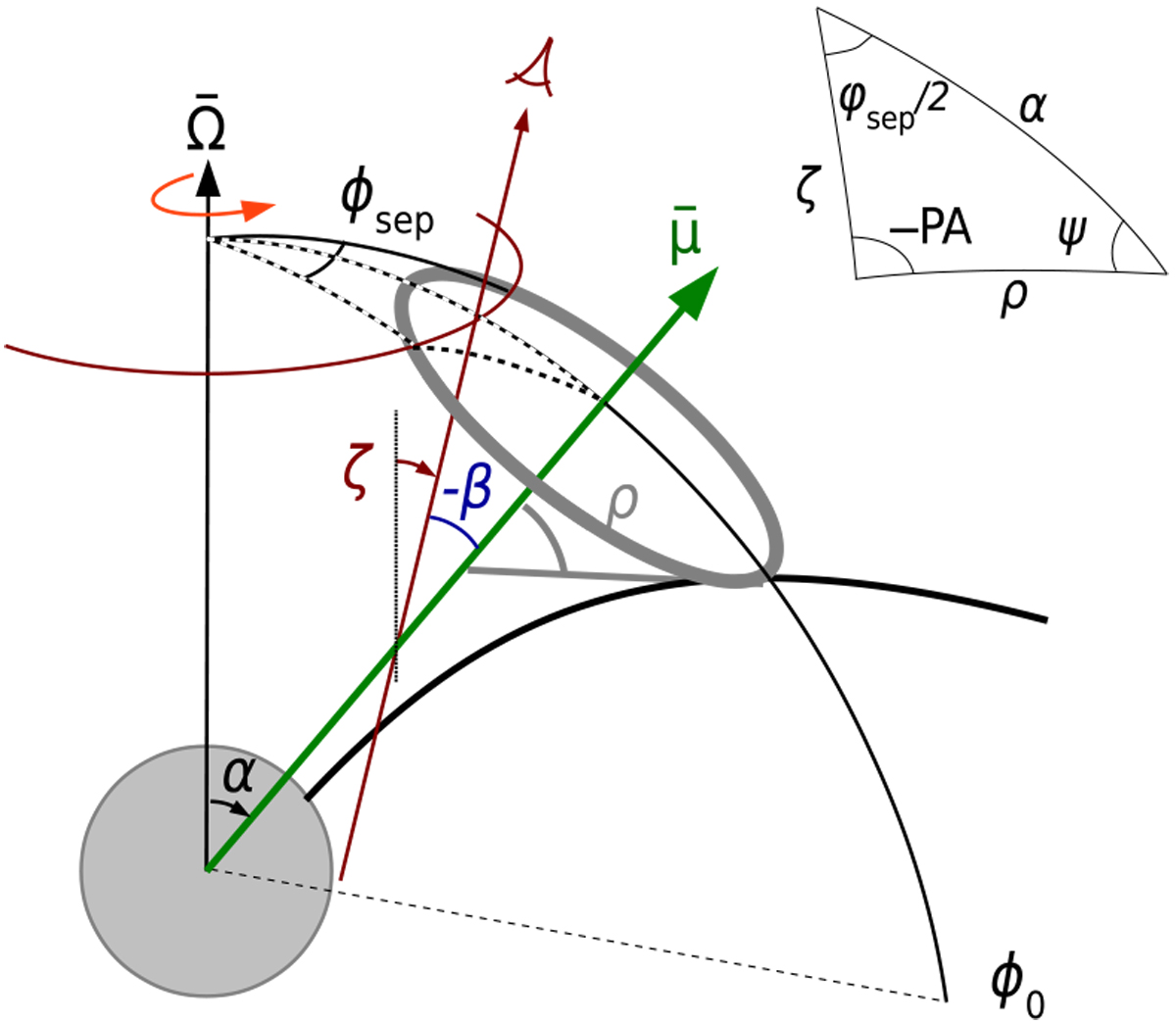Fig. 1

Sketch of basic magnetospheric geometry. The angular momentum ![]() of the pulsar is directed vertically and the magnetic dipole vector
of the pulsar is directed vertically and the magnetic dipole vector ![]() is inclined by the angle α. The angle between the spin axis and the LOS is the viewing angle ζ. The LOS vector stays fixed in space while the pulsar rotates around the spin axis in counter-clockwise direction. The sketch shows the moment in time when the magnetic dipole and LOS vectors lie on the same plane, corresponding to the fiducial rotational longitude, ϕ0. In this plane, the angle between an observer and the magnetic axis is β. Following EW01, α, and ζ are measured clockwise from the direction of
is inclined by the angle α. The angle between the spin axis and the LOS is the viewing angle ζ. The LOS vector stays fixed in space while the pulsar rotates around the spin axis in counter-clockwise direction. The sketch shows the moment in time when the magnetic dipole and LOS vectors lie on the same plane, corresponding to the fiducial rotational longitude, ϕ0. In this plane, the angle between an observer and the magnetic axis is β. Following EW01, α, and ζ are measured clockwise from the direction of ![]() , and β is measured clockwise from the direction of
, and β is measured clockwise from the direction of ![]() (see text for more details). The thick black line shows an example of a dipolar field line, and the thick grey line marks the emission cone with an opening angle, ρ. Two components of the observed average profile are separated by ϕsep in rotational longitude. The dashed-line spherical triangle is shown in the inset, with PA being the measured position angle of the linearly polarised radiation, and ψ being the magnetic azimuth. We note that β, ζ, and ρ are usually plotted shifted to the common origin in the centre of the star (e.g. Lorimer & Kramer 2004; Fig. 3.4a). This transformation does not change the subsequent derivations in the text.
(see text for more details). The thick black line shows an example of a dipolar field line, and the thick grey line marks the emission cone with an opening angle, ρ. Two components of the observed average profile are separated by ϕsep in rotational longitude. The dashed-line spherical triangle is shown in the inset, with PA being the measured position angle of the linearly polarised radiation, and ψ being the magnetic azimuth. We note that β, ζ, and ρ are usually plotted shifted to the common origin in the centre of the star (e.g. Lorimer & Kramer 2004; Fig. 3.4a). This transformation does not change the subsequent derivations in the text.
Current usage metrics show cumulative count of Article Views (full-text article views including HTML views, PDF and ePub downloads, according to the available data) and Abstracts Views on Vision4Press platform.
Data correspond to usage on the plateform after 2015. The current usage metrics is available 48-96 hours after online publication and is updated daily on week days.
Initial download of the metrics may take a while.


